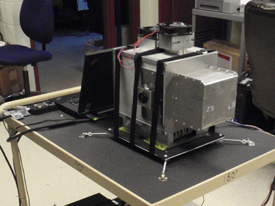Better Organic Electronics
*Berkeley Lab Researchers Show the Way Forward for Improving Organic and Molecular Electronic Devices*
Future prospects for superior new organic electronic devices are brighter now thanks to a new study by researchers with the U.S. Department of Energy (DOE)’s Lawrence Berkeley National Laboratory (Berkeley Lab). Working at the Lab’s Molecular Foundry, a DOE nanoscience center, the team has provided the first experimental determination of the pathways by which electrical charge is transported from molecule-to-molecule in an organic thin film. Their results also show how such organic films can be chemically modified to improve conductance.
“We have shown that when the molecules in organic thin films are aligned in particular directions, there is much better conductance,” says Miquel Salmeron, a leading authority on nanoscale surface imaging who directs Berkeley Lab’s Materials Sciences Division and who led this study. “Chemists already know how to fabricate organic thin films in a way that can achieve such an alignment, which means they should be able to use the information provided by our methodology to determine the molecular alignment and its role on charge transport across and along the molecules. This will help improve the performances of future organic electronic devices.” (more…)

